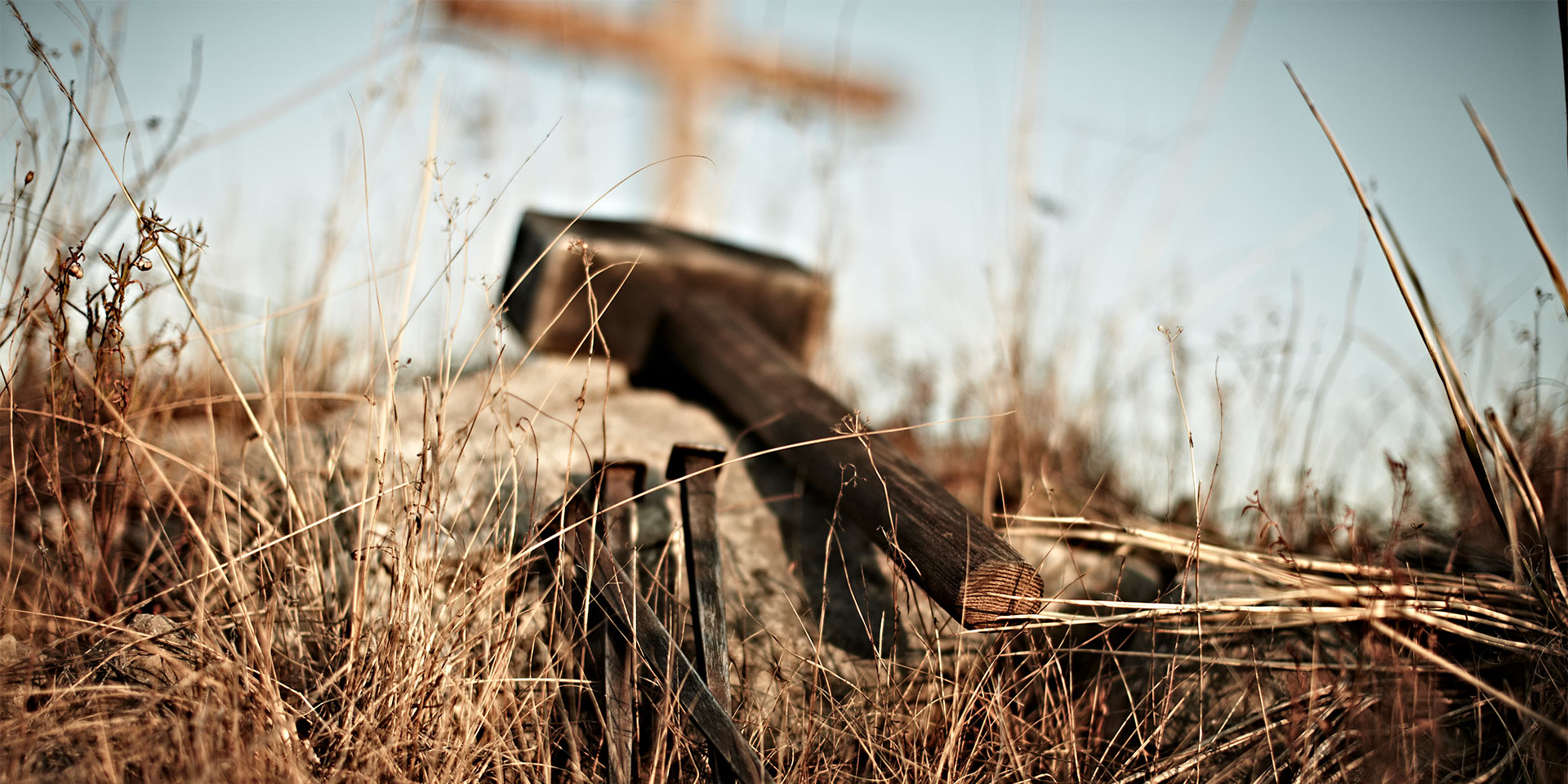A Time to Forgive is the story of a pilgrimage through the void of pain and trauma. A father, devastated by the enormity of his loss, struggles to forgive his daughter’s killer.
A pastor, professor at Walla Walla University, and later a chaplain (promoted to the rank of rear admiral), Darold Bigger writes a book born out of the turmoil of unimaginable loss, and dedicates it to “anyone who needs to forgive or needs to be forgiven—which is all of us”[1].
The first part of the book, divided into 9 chapters, is an account of the circumstances surrounding the death of Shannon, the first of the Bigger family’s two daughters. The author succeeds in taking the reader behind the scenes of this tragedy, progressing slowly through the whirlwind of events and emotions, beginning with the morning of Shannon’s death and ending with the moment when her parents return to the scene of the crime ten years later.
We’re taken through all the stages of loss, through a flurry of detail and revelation about the family’s emotional turmoil. We learn about the imprint left by the death of a person in circumstances that will never be fully understood, and about the part played by the support of friends and community. The early chapters are a compilation of the gestures, messages, and conversations that managed to comfort the parents’ broken hearts. Bigger also attempts to piece together a portrait of Shannon from their memories and the testimony of friends, acquaintances, and strangers, not only to ensure that she is not forgotten, but also to make sense of this senseless death by reflecting on the meaning of her all-too-short life.
Shannon was murdered in her home at the very end of her internship in the development department of Washington Adventist Hospital. Just two weeks later, her father was supposed to arrive with a trailer to take her and all her belongings to her new job in Idaho. On the night of the murder, her cousin Ava had offered to stay with her, but Shannon had refused—she wanted to get some rest and spend the evening packing, as the move was nearing. The next day, Shannon didn’t turn up for work or answer her phone; she was found lifeless in her bed, stabbed several times.
The killer, a young man called Anthony Robinson, was soon found by the police, and he claimed that Shannon had invited him to Bible study after a meeting in the shopping centre. He claimed the motive for the murder was that she had been disrespectful to him. Anthony changed his story at least 8 times, so her parents never found out what really happened that night. However, knowing Shannon as they did, her family rejected some scenarios completely and took comfort in others. As Shannon had been known to freeze emotionally in dangerous situations before, her parents thought it likely (as did those who investigated the case) that she had lost consciousness very early on.
“I didn’t know people could cry that much,” Bigger confesses, trying to express glimpses of the grief he experienced early on—seeing his daughter on the news in one of those big plastic bags that bodies are wrapped in, talking to the funeral home about how to cover wounds for an open casket service, attending the church dinner after the funeral where memories of Shannon’s time as a college student in Walla Walla were shared.
In the first part of the book, Bigger explores some of the harrowing questions he and his wife faced, ultimately concluding that there are no easy answers to the tragedies that occur in a fallen world. Although it is tempting to believe that Shannon’s death could have been avoided (had she lived elsewhere, or had the attacker’s financial situation not been so desperate), Bigger believes that her death is “an example of the much more sinister reality that evil permeates every human being”[2] and that the evil that plagues our planet will not be destroyed until the day God puts an end to it forever.
Writing about the gifts that have eased his grief (the gift of clearer understanding as people talked about the impact Shannon’s life had on them, the gift of time that fades memories, the gift of hope for a better world), Bigger openly describes how difficult it is to cope with the great changes that come after the death of a child. He talks about how difficult it is to come to terms with the fact that your partner may change as a result of the trauma, and that you have to adapt to those changes. Or accepting that each family member has their own pace of healing. Or thinking about all that your daughter has lost by dying at only 25. And finally, to gain a new perspective on your wounds and to look for ways to bring healing and hope to those who have been broken and need support.
The second part of the book presents a series of lessons and principles relating to forgiveness and how it works, many of which were tested or incorporated during the author’s time dealing with a wave of anger and resentment. A year after Shannon’s death, Bigger discovered that underneath the overwhelming grief that had numbed every other emotion, there was a consuming rage, fuelled in part by her perpetrator’s behaviour. Anthony had shown no sign of remorse during the trial and had even been defiant. Furthermore, after pleading guilty to murder and armed robbery (and being sentenced to life in prison without the possibility of parole), Anthony decided to appeal and change his original plea in order to receive a lesser sentence.
The stress management techniques he had taught his students in the past didn’t work, and spiritual exercises (prayer, Bible study) didn’t ease the grieving father’s anger. Bigger describes the pain of discovering himself spiritually bankrupt, unable to forgive, withered inside by indignation, anger, and a desire for revenge.
Forgiveness finally came as a gift from God when he realised that he was as much in need of transformation as the murderer locked away in his cell for (probably) the rest of his life.
After examining the role of our emotions, but also their limits, the author explores the reasons that make forgiveness a difficult act, especially when the evil committed against us destabilises us and leaves us struggling under the weight of our scars. This section also discusses the idea of our duty to stand up for those who cannot stand up for themselves, and lists several forms of justice (which are not mutually exclusive).
Finally, Bigger argues why forgiveness is a divine gift, not our task or achievement. It is God who forgives first, Bigger concludes, highlighting the distorted way we see things when, interpreting a verse from the Lord’s Prayer, we come to believe that God will forgive us only after we have first forgiven those who have wronged us (“And forgive us our debts, as we also have forgiven our debtors.”—Matthew 6:12). In reality, it is only after we have been forgiven that we receive the power to forgive others, freeing ourselves from the corrosive power of bitterness, resentment, and anger.
The third section of the book is a collection of essays by Methodist minister Frank Kimper. Bigger was one of Kimper’s students during his years as a pastoral counsellor and collected the professor’s essays, which were often distributed to students but never published until A time to forgive was released. The essays address anger, self-esteem, and criticism (as a means of growth and development), and place love at the heart of every interaction with others and ourselves.
We are called to forgive and love in the compelling way we were first loved—not with our finite resources, but with those provided by the One who did not teach us a philosophy of love, but gave us a practical, fearless demonstration of it.
The One who loves us as we are, before we become what He has called us to be, does not usually intervene to stop the tragic course of events. But He shares our pain, accompanies us through each of our experiences and losses, and leads us to healing—even in circumstances for which we cannot find a name (What could we call a parent who has lost a child? Orphan?), and even in those where an otherwise natural question (How many children do you have?) makes you feel lost, confused, and uprooted.
A time to forgive is ultimately a credible plea to face the reality of evil with hope, because we have a God for whom “what will be already is”.
Carmen Lăiu is an editor of Signs of the Times Romania and ST Network.


















